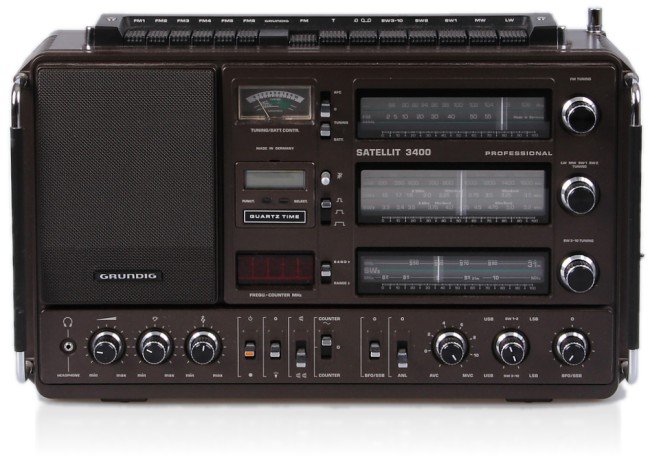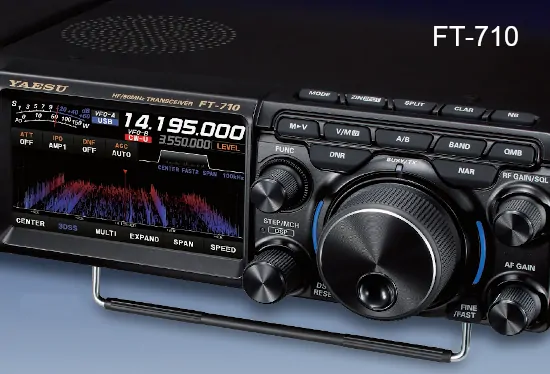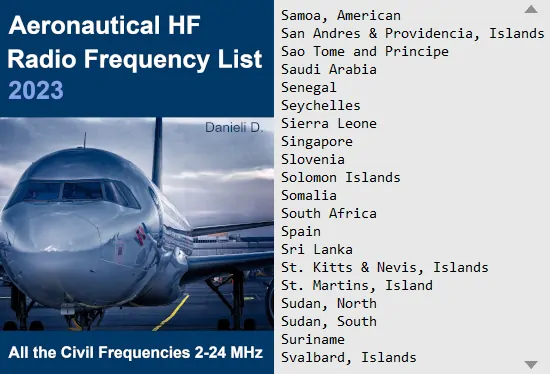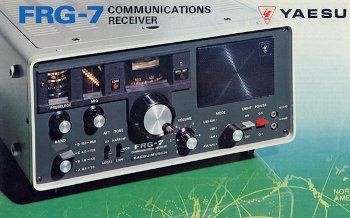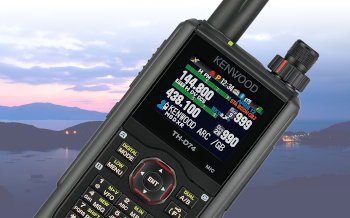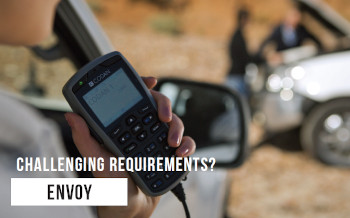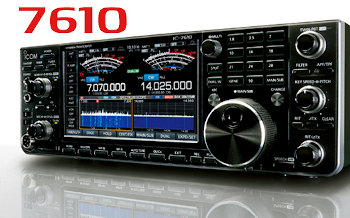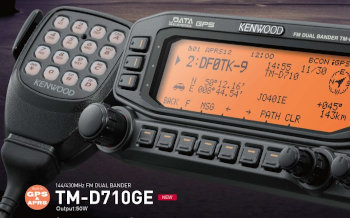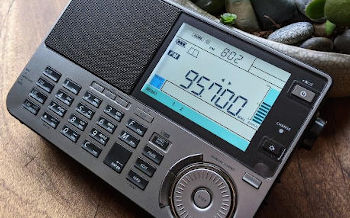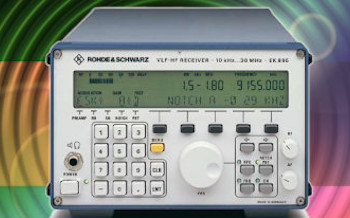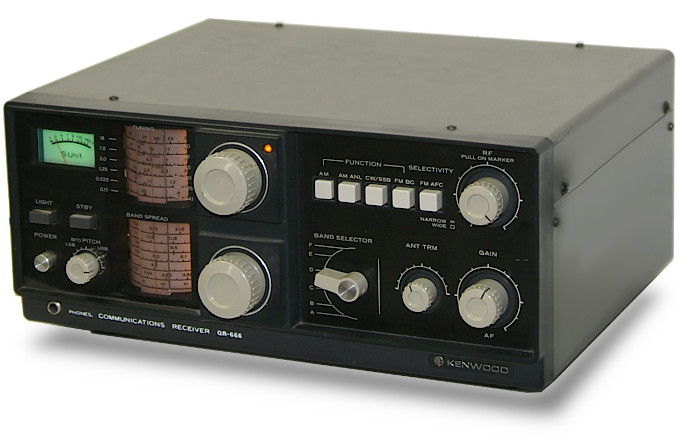
The Trio Kenwood QR-666 is a fully transistorized, solid state, communication type receiver. It receives AM, CW and SSB signals from 170 kHz to 30 MHz with 87.5-108 MHz frequency range, and Wide-FM mode, as option. The receiver is provided with a main tuning dial and a band spread dial. The main tuning dial is calibrated with HF frequencies in 6 bands (A, B, C, D, E and F). The band spread dial indicates the frequency of major broadcast band and amateur band more precisely for easy tuning of each meter band. Features: single conversion superheterodyne (band A to E), double conversion (band F), selectivity of 3 or 5 kHz, built-in telescopic whip. The radio can be powered via VAC, from external DC power source, or by internal batteries. Semiconductors used: 16 transistors, 4 FET, and 22 diodes. Ideated in Japan, year of introduction 1974.
Reference market : amateur-radio
QR-666 specifications
| General |
| Frequency coverage | |
|---|---|
| Main dial | 0.1700 ~ 0.4100 MHz (Band A)
0.5250 ~ 1.2500 MHz (Band B) 1.2500 ~ 3.0000 MHz (Band C) 3.0000 ~ 7.5000 MHz (Band D) 7.5000 ~ 18.0000 MHz (Band E) 18.0000 ~ 30.0000 MHz (Band F) 87.5000 ~ 108.0000 MHz [1] 76.0000 ~ 90.0000 MHz [2] |
| Band spread (Ham bands) | 3.5000 ~ 4.0000 MHz (80m)
7.0000 ~ 7.5000 MHz (40m) 14.0000 ~ 14.6000 MHz (20m) 21.0000 ~ 21.5000 MHz (15m) 28.0000 ~ 30.0000 MHz (10m) |
| Band spread (BC bands) [3] | 3.8200 ~ 4.0000 MHz (75m)
4.7500 ~ 5.1000 MHz (60m) 5.9000 ~ 6.2000 MHz (49m) 7.0000 ~ 7.5000 MHz (41m) 9.4000 ~ 9.8000 MHz (31m) 11.7000 ~ 12.0000 MHz (25m) 15.0000 ~ 15.5000 MHz (19m) 17.6000 ~ 18.0000 MHz (16m) 21.4000 ~ 21.8000 MHz (13m) 25.6000 ~ 26.2000 MHz (11m) |
| Mode | |
| CW / LSB / USB / AM / WFM [1][2] | |
| Receiver |
| Sensitivity | |
|---|---|
| SSB/CW [4] | 2.0 uV (190 kHz)
1.6 uV (280 kHz) 1.6 uV (380 kHz) 2.0 uV (600 kHz) 1.0 uV (900 kHz) 1.0 uV (1.2 MHz) 2.0 uV (1.3 MHz) 1.0 uV (2.0 MHz) 1.0 uV (2.8 MHz) 2.0 uV (3.4 MHz) 1.4 uV (5.0 MHz) 1.4 uV (7.0 MHz) 3.0 uV (8.0 MHz) 2.0 uV (12 MHz) 2.0 uV (17 MHz) 3.0 uV (19 MHz) 2.0 uV (24 MHz) 1.6 uV (29 MHz) |
| AM [4] | 3.0 uV (190 kHz)
2.0 uV (280 kHz) 2.0 uV (380 kHz) 3.0 uV (600 kHz) 1.6 uV (900 kHz) 1.6 uV (1.2 MHz) 3.0 uV (1.3 MHz) 1.6 uV (2.0 MHz) 1.6 uV (2.8 MHz) 3.0 uV (3.4 MHz) 2.0 uV (5.0 MHz) 2.0 uV (7.0 MHz) 5.0 uV (8.0 MHz) 3.0 uV (12 MHz) 3.0 uV (17 MHz) 5.0 uV (19 MHz) 3.0 uV (24 MHz) 2.0 uV (29 MHz) |
| WFM [5] | 3.0 uV (88 MHz)
3.0 uV (98 MHz) 3.0 uV (108 MHz) |
| Selectivity | |
| AM (wide) | >5 kHz (-6dB)
<15 kHz (-50dB) |
| AM (narrow) | >3 kHz (-6dB)
<15 kHz (-60dB) |
| WFM | >160 kHz (-6dB)
<750 kHz (-50dB) |
| Image rejection | |
| >65 dB (280 kHz)
>50 dB (900 kHz) >50 dB (2 MHz) >40 dB (5 MHz) >25 dB (12 MHz) >40 dB (24 MHz) >60 dB (98 MHz) |
|
| IF rejection | |
| >50 dB (280 kHz)
>60 dB (900 kHz) >70 dB (2 MHz) >70 dB (5 MHz) >70 dB (12 MHz) >50 dB (24 MHz) >70 dB (98 MHz) |
|
| BFO range | |
| ±3 kHz | |
| Frequency stability | |
| ±1 kHz max with temperature 23°C 1' to 60' after warm-up (280 kHz).
±2 kHz max with temperature 23°C 1' to 60' after warm-up (900 kHz). ±10 kHz max with temperature 23°C 1' to 60' after warm-up (2 MHz). ±15 kHz max with temperature 23°C 1' to 60' after warm-up (5 MHz). ±20 kHz max with temperature 23°C 1' to 60' after warm-up (12 MHz). ±25 kHz max with temperature 23°C 1' to 60' after warm-up (24 MHz). ±80 kHz max with temperature 23°C 1' to 60' after warm-up (98 MHz). |
|
| IF (Intermediate Frequency) | |
| 1° | 455 kHz (Band A, B, C, D, E)
4.035 MHz (Band F) 10.700 MHz (Band 87.5-108 MHz) |
| 2° | 455 kHz (Band F) |
| Features |
| Antenna | |
|---|---|
| SO239 50~75Ω (HF)
Screw terminals 50~75Ω (HF) Screw terminals 50~300Ω (FM) Whip antenna (75cm) |
|
| Power supply | |
| 100/117/220/240 VAC
12~15 VDC external source (13V nominal) 12 VDC batteries (8 x UM1) |
|
| Power consumption | |
| 15W (VAC)
13W (external source) 13W (batteries) |
|
| Audio power | |
| 1.5 W on 8Ω | |
| Audio output | |
| Jack 3.5 mm (headphone) | |
| Connections | |
| Jack (Remote) |
| Mechanical and environmental data |
| Dimensions | |
|---|---|
| 362 (W) x 163 (H) x 322 (D) mm, without FM option
380 (W) x 163 (H) x 322 (D) mm, with FM option |
|
| Weight | |
| 7.3 kg |
- Option, FM broadcast band for generic market version.
- Option, FM broadcast band for Japan version.
- Option.
- 10 dB S/N ratio at 50 mW output on 8Ω.
- 20 dB S/N ratio at 50 mW output on 8Ω, deviation 22.5 kHz / 1 kHz tone.

Updated | Complete | UK - NORTHERN IRELAND
378 pages | 300+ Airports and Airfields
Voice com. | ACC | FIC | VOLMET | ACARS | VDL | ILS | VOR | DME
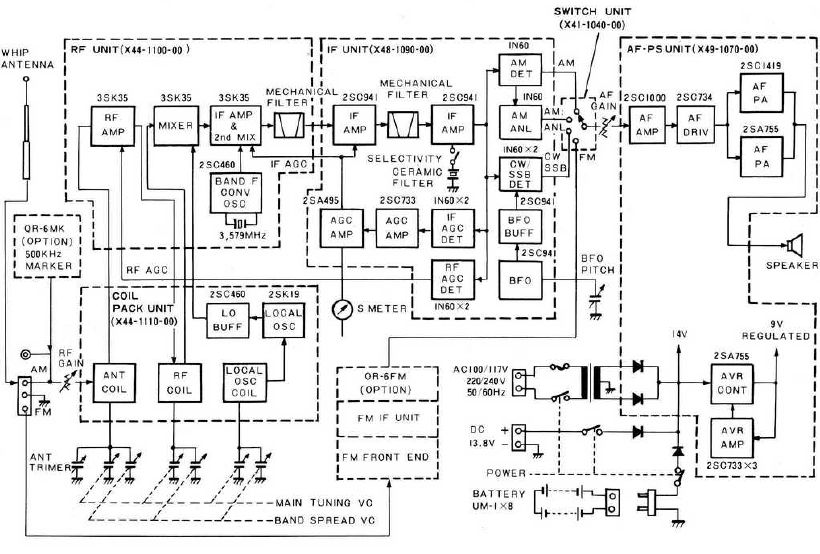
QR-666 RF amplifier circuit :
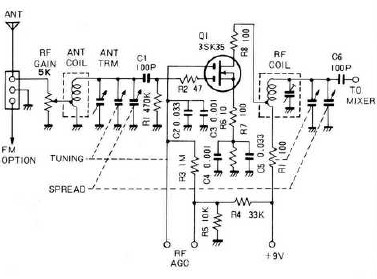
Trio Kenwood QR-666 RF amplifier circuit with 3SK35 dual-gate MOSFET
QR-666 mixer circuit :

Trio Kenwood QR-666 mixer circuit with 3SK35 dual-gate MOSFET
QR-666 local oscillator circuit :
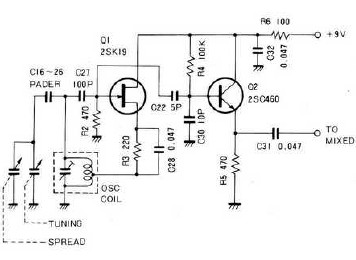
Trio Kenwood QR-666 local oscillator with 2SK19 FET (Hartley type) and 2SC460 (buffer)
QR-666 IF amplifier circuit :
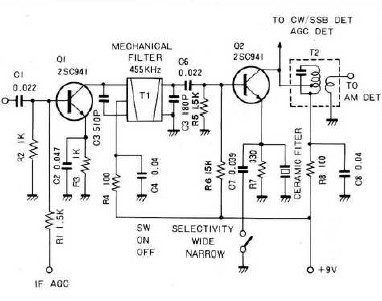
Trio Kenwood QR-666 IF amplifier circuit with 2SC941 transistors
QR-666 price
We have collected for your convenience the Trio Kenwood QR666 sale price (UK Pounds) and its trend over time. Useful to guarantee a cheaper purchase of this radio and to put it for sale in the second-hand market. Of course offers, accessories, warranty terms and conditions can lead to different figures.
|
|
|
|
|
GBP 85.00 (99EUR) |
2022-feb |
Second Hand This receiver has been tested. It needs to be repaired or used for components |
|
GBP 138.00 (180USD) |
2020-apr |
Second Hand Excellent condition. Comes with power cord, brochure, original manual |
QR-666 review
Your opinion on merits, defects, experiences, with this radio set is welcome. Write your review, after a technical evaluation by our staff if found suitable will be published on this page. We thank you for your precious contribution.
